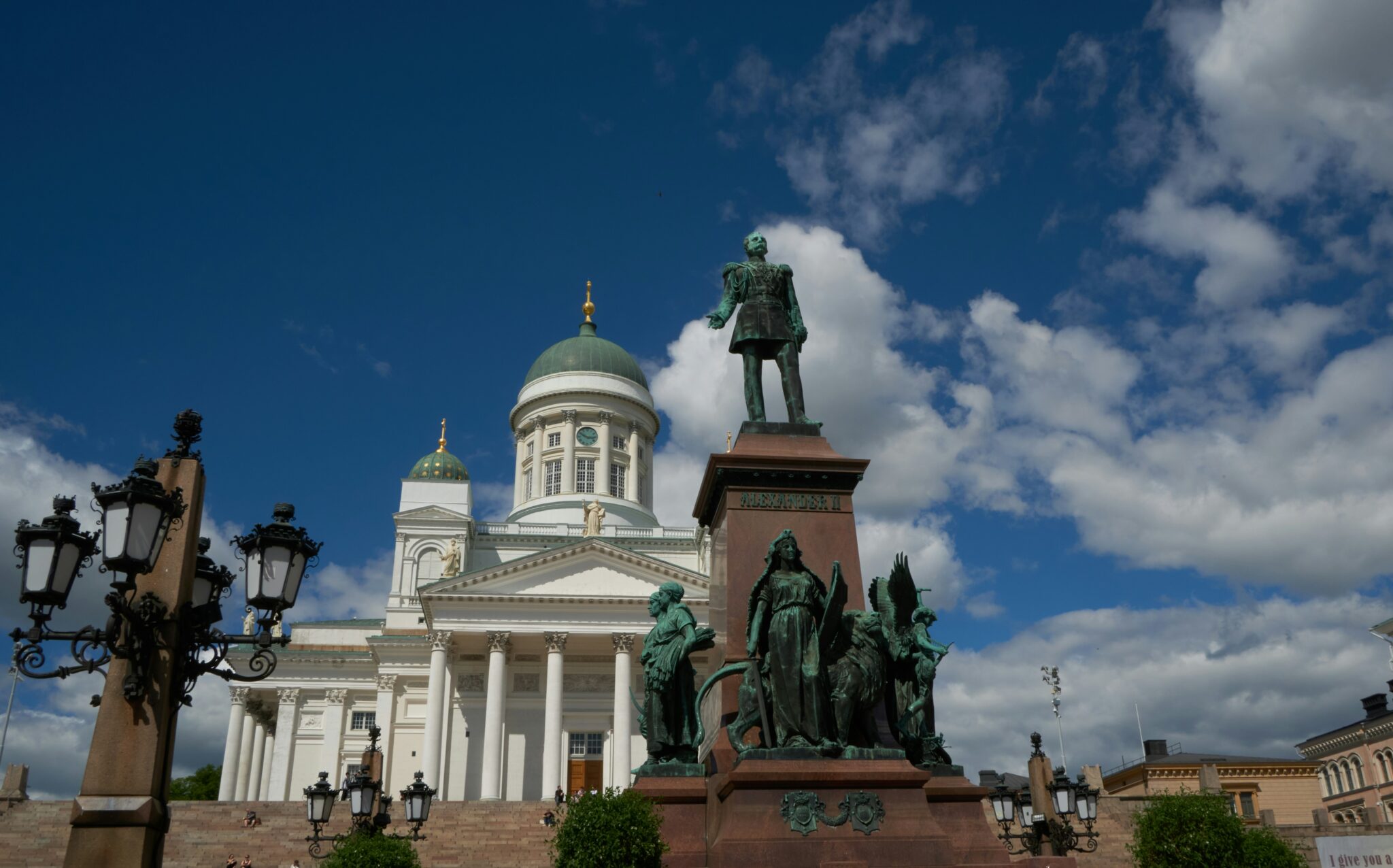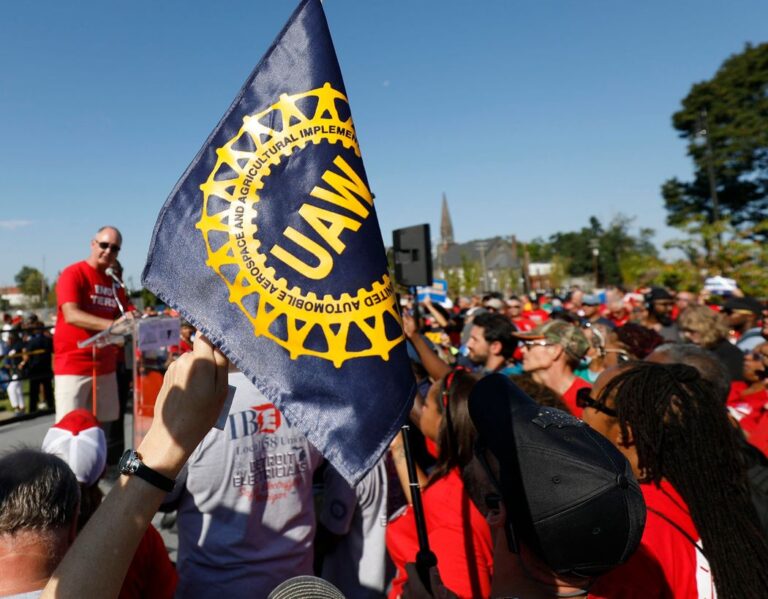
German Bender is a senior research associate at Harvard Law School, an affiliated researcher at the Stockholm School of Economics, and chief analyst at the progressive Swedish think tank Arena

Anders Kjellberg is a senior professor of sociology at Lund University and a member of the International Advisory Panel for the European Journal of Industrial Relations
For the past months, Finland has been shaken by recurring strike waves, involving hundreds of thousands of workers in all sectors of the economy. The strikes are political, not directed at any particular company or related to bargaining demands.
Instead, the primary target is the conservative Finnish government, and its plan to implement a wide set of policies aimed at improving the manufacturing sector’s competitiveness after many years of weak economic growth. If passed, these policies would weaken unions significantly, and contribute to the employer strategy to dismantle the Finnish sectoral bargaining model.
Like in the Scandinavian countries (Sweden, Denmark, and Norway), sectoral bargaining is the norm in Finland. But the Finnish industrial relations system has become more decentralized in recent years, as the important Forest Industries Federation has abandoned sectoral agreements and others are strongly pushing for local (firm) level agreements.
Last year, the current government was elected, and it immediately adopted the employers’ decentralization agenda. This has now resulted in a policy package that is tailored to the demands of the main employer and business confederations EK and SY, and especially to the interests of the export-oriented manufacturing industry.
The sweeping changes that probably await Finnish workers can be summarized as follows:
- Constraints on sympathy strikes and political strikes. The government wants to introduce a proportionality requirement that would rule out many sympathy (or solidarity) strikes that unions can use to support each other. Such restrictions do not exist in Sweden – as evident in the current Tesla strike – but do exist in different forms in Denmark, Norway, and Germany. Political strikes will be limited to 24 hours and restricted in other ways. The fines for unions involved in forbidden strikes will be considerably increased, and fines for individual union members doing so will be introduced.
- Wages in the exporting industries will set the cap for other sectors. Government-appointed mediators in collective bargaining disputes will not be allowed to approve wage agreements higher than those in the exporting industries. In practice, this means that industrial unions and employers – supported by the state – will set the pace of wage growth for the entire economy, by bargaining for yearly wage increases that other sectors will have to abide by. The idea is to protect the industry’s competitiveness by keeping labor costs competitive relative to countries like Sweden and Germany. This principle (called “pattern bargaining” in the industrial relations literature) is applied in various forms in several other European countries, and in some of them (perhaps most notably Sweden) it has led to wage moderation benefitting industrial competitiveness––while at the same time providing considerable real wage growth for workers. But in these countries, pattern bargaining is voluntarily implemented by unions and employers through collective bargaining, not legally imposed by the government as in the Finnish proposal.
- Local bargaining will be expanded and deregulated. Changes in bargaining rules will make it easier to deviate at the firm-level from sectoral agreements, and also allow firms non-affiliated to employers’ associations but covered by extended collective agreements to do so (it is now forbidden in those firms). In Finland, collective bargaining agreements that cover more than half of workers in a sector are legally extended to cover all workers, even in firms that haven’t signed them, so this would constitute a severe blow to the sectoral bargaining model. Another proposal of great concern for unions, is that such local agreements may be signed by non-union representatives, opening up the possibility for employers to set up company (yellow) unions.
- Reduced employment security and social benefits. A wide set of policies reducing employment security and social benefits, for instance flexibilization of fixed-term contracts, lower unemployment benefits, abolished financial aid for adult education, and new limitations on sick leave. All of these proposals would not only harm workers directly, but also indirectly weaken their bargaining power.
The political scientist Markku Sippola at the University of Helsinki has called the Finnish government’s ambitions a “shock therapy” and likened them to those of Margaret Thatcher, the British prime minister who broke the backs of British unions in the 1970s and 1980s. Like Thatcher, prime minister Petteri Orpo’s conservative government has opted to effect change through legal reforms, rather than through collective bargaining.
As the government has adopted a policy agenda supported solely by employers, unions have had little choice but to respond with political strikes. If instead the government and the employers had tried to achieve their aims through collective bargaining, unions would have been able to put forward counter demands. And, if unsuccessful in those negotiations, unions could then have resorted to industrial action directed at their employer counterparts rather than the government.
The politicization of issues that could have been resolved within the industrial relations system implies that those same issues could very well return to the political agenda in coming elections, should the opposition parties promise to reverse the changes once in power. Hence, the Finnish government’s reform package seems to be having the opposite effect as intended––more instability rather than less.
Another adverse effect that is contrary to the government’s cost-saving and competitiveness-enhancing ambitions, are the costs of USD 325 million caused by labor unrest in the manufacturing and transportation sectors (among others), according to the employer association EK.
As the strikes continue to disrupt the manufacturing sector and other parts of the labor market, it is evidently clear that time is money. The government wants to pass key parts of its labor policies before summer. But urgency is not the government’s only consideration, timing is crucial as well. Union representatives have noted that the labor law restrictions are intended to come into force before the rest of the policy package, probably in order to curb the expected political protests that these will trigger.
Time is critical for unions too, because public support tends to wane as strikes drag on for extended periods. According to the public service network YLE, public support for the political strikes has fallen 10 percentage points since December and now stands at 51 percent, with 41 percent of Finns opposing the strikes. On the other hand, 59 percent claim to be disappointed or very disappointed with the government’s response.
The outcome remains unclear, but given the government’s unwavering stance, it seems likely that labor unrest will continue at least until the restrictions on sympathy and political strikes come into force. If and when that happens, the government may choose to oblige the protesters by meeting some of their demands, or it may double down and carry forth with the rest of its reforms.
If employer and business organizations eventually decide that the costs of the political strike waves are simply too high, and urge the prime minister to defuse the situation, that could be decisive. Given that most Finns seem to be dissatisfied with how the government has handled matters so far, publicly voiced concern or even criticism from organized business interests could tip the scales.









Daily News & Commentary
Start your day with our roundup of the latest labor developments. See all
July 2
Block, Nanda, and Nayak argue that the NLRA is under attack, harming democracy; the EEOC files a motion to dismiss a lawsuit brought by former EEOC Commissioner Jocelyn Samuels; and SEIU Local 1000 strikes an agreement with the State of California to delay the state's return-to-office executive order for state workers.
July 1
In today’s news and commentary, the Department of Labor proposes to roll back minimum wage and overtime protections for home care workers, a federal judge dismissed a lawsuit by public defenders over a union’s Gaza statements, and Philadelphia’s largest municipal union is on strike for first time in nearly 40 years. On Monday, the U.S. […]
June 30
Antidiscrimination scholars question McDonnell Douglas, George Washington University Hospital bargained in bad faith, and NY regulators defend LPA dispensary law.
June 29
In today’s news and commentary, Trump v. CASA restricts nationwide injunctions, a preliminary injunction continues to stop DOL from shutting down Job Corps, and the minimum wage is set to rise in multiple cities and states. On Friday, the Supreme Court held in Trump v. CASA that universal injunctions “likely exceed the equitable authority that […]
June 27
Labor's role in Zohran Mamdani's victory; DHS funding amendment aims to expand guest worker programs; COSELL submission deadline rapidly approaching
June 26
A district judge issues a preliminary injunction blocking agencies from implementing Trump’s executive order eliminating collective bargaining for federal workers; workers organize for the reinstatement of two doctors who were put on administrative leave after union activity; and Lamont vetoes unemployment benefits for striking workers.